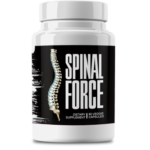This Village-Made Chinese Pain Reliever Eliminates Back And Joint Pain!
Top 3 Braces for Mild Arthritis in Knee Support

Best Knee Braces for Mild Arthritis: Support Without the Stiffness
That nagging ache in your knee when you stand up after sitting too long? The stiffness that makes climbing stairs feel like a workout? If you're nodding along, you're probably familiar with mild knee arthritis. The good news? The right knee brace can be a game-changer - offering support, easing discomfort, and helping you move more freely. Let's explore your best options and how to choose one that actually works for your lifestyle.
Knee Arthritis 101: What's Really Going On?
Before we talk solutions, let's understand the problem. Mild knee arthritis isn't just about getting older - it's your joint's way of saying it needs some TLC.
The Wear-and-Tear Truth
Think of your knee cartilage like the tread on your favorite shoes. Over time, it naturally wears down. With mild arthritis, that cushioning gets thinner, leading to those annoying (but not yet debilitating) symptoms we all know too well.
Why Your Knees Might Be Complaining
- Years of faithful service: Just like anything else, joints show wear over time
- Old injuries come knocking: That soccer injury from college? It might be introducing itself again
- Too much of a good thing: Runners and construction workers often see this first
- Extra weight = extra stress: Every pound adds pressure to those hardworking joints
Your Body's Early Warning Signs
- That "need to stretch it out" feeling after sitting through a movie
- Subtle puffiness after gardening or a long walk
- A dull ache that comes and goes
- Occasional clicks or pops that make you wonder "was that normal?"
Why a Knee Brace Might Become Your New Best Friend
A good knee brace does more than just cover the problem - it actively helps your joint feel better. Here's the science behind the support.
The Magic of Redistribution
Quality braces work like a traffic cop for your knee pressure - directing stress away from sore spots and spreading the load more evenly. Some even give you gentle compression to reduce swelling and improve circulation.
Real Benefits You'll Actually Notice
- Less "ouch" during everyday movements
- Better stability when you're on your feet
- More confidence to stay active
- Potentially slowing down further wear
When to Consider Strapping Up
If your knee regularly protests during normal activities, or if you find yourself avoiding stairs, it's brace time. (And if pain suddenly gets worse? Definitely see your doctor.)
Our Top 3 Knee Brace Picks for Mild Arthritis
We've tested and researched so you don't have to. These braces stand out for comfort, support, and real-world results.
1. Bauerfeind GenuTrain – Like a Hug for Your Knee
This one's perfect if you want something you can forget you're wearing. Lightweight, breathable, and just supportive enough for daily wear without feeling like you're in a medical device.
2. DonJoy Performance Bionic – For the Movers and Shakers
Active folks love this one. It gives you stability when you're hiking or playing tennis but moves with you rather than against you.
3. Shock Doctor 875 – Your Adjustable Ally
Great for days when your needs change - tighten it up for your morning walk, loosen it a bit for desk work. The Goldilocks of knee braces.
Finding Your Perfect Brace Match
Not all braces work for all people. Here's how to find "the one" for your knees.
What Really Matters
- Fabric that breathes: Because sweaty knees are nobody's friend
- Snug but not tight: Should feel supportive, not like a tourniquet
- Smart support features: Look for strategic padding or hinges where you need them
Sizing Up the Situation
Grab a measuring tape - proper fit makes all the difference. A good brace stays put without you constantly adjusting it.
Brace Types Decoded
- Sleeves: Easy on/off but best for very mild support
- Wraps: Customizable fit, though they might need occasional readjusting
- Hinged: Serious support for when you need it, but not exactly runway-ready
Getting the Most From Your Knee Brace
A brace can help, but only if you use it right. Here's how to make it work for you.
Putting It On Properly
Align the support pad with your kneecap - sounds obvious, but many people get this wrong. The straps should feel secure without cutting off circulation.
Timing Is Everything
Wear it when you're active, or all day if it helps. Listen to your body - it'll tell you what works.
Keeping It Fresh
- Hand wash (because washing machines eat small items)
- Check for stretched-out elastic or worn parts
- Replace when it stops doing its job - no heroics
Beyond the Brace: Other Ways to Help Your Knees
While braces are great, combining approaches works even better.
Strengthen Your Support System
Targeted exercises can build up the muscles around your knee, taking pressure off the joint itself.
Quick Relief Options
NSAIDs can help with flare-ups, but they're not a long-term solution. Use as directed.
Lifestyle Tweaks That Add Up
- Losing even a few pounds makes a difference
- Swap running for swimming or cycling some days
- Good shoes aren't just for fashion - your knees will thank you
Your Top Knee Brace Questions, Answered
Can a Brace Actually Make Things Worse?
Not if it fits right. Too tight is the enemy - you want support, not a blood flow cutoff.
How Many Hours Should I Wear It?
Start slow - maybe 2-3 hours daily, then increase as comfortable. Your doctor can give personalized advice.
Will Insurance Cover This?
Sometimes! It never hurts to ask, especially if your doctor writes a prescription.
Wrapping Up (Pun Intended)
Living with mild knee arthritis doesn't mean giving up the activities you love. With options like the Bauerfeind GenuTrain, DonJoy Performance Bionic, or Shock Doctor 875, you can find support that fits your life. Combine a good brace with smart lifestyle choices, and you'll be keeping up with your grandkids (or your dog) in no time. And remember - if things don't improve, a healthcare provider can help you explore other options.








